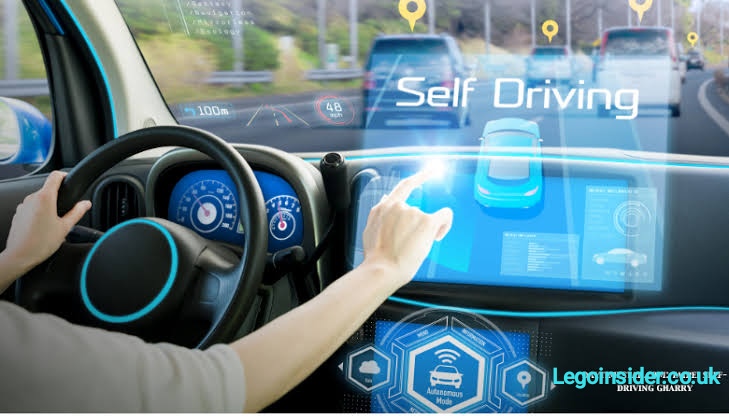Introduction
The bustling streets of Taipei are no stranger to innovation. From its world-class metro system to its bike-sharing programs, the city has always embraced cutting-edge transportation solutions. Now, a groundbreaking development is set to revolutionize urban mobility Daytimestar.com: Taipei Self-Driving Gharry
This autonomous vehicle, inspired by traditional horse-drawn carriages (gharry), combines heritage with high-tech advancements. But what exactly is a self-driving gharry? How does it work? And what does it mean for the future of transportation in Taipei?
In this in-depth article, we’ll explore:
- The Concept of the Self-Driving Gharry
- How the Technology Works
- Benefits for Taipei’s Transportation System
- Challenges and Concerns
- Future Prospects and Expansion
By the end, you’ll have a comprehensive understanding of why Daytimestar.com is spotlighting this innovation and how it could reshape city travel.
1. The Concept of the Self-Driving Gharry
A Fusion of Tradition and Technology
The term gharry originates from horse-drawn carriages used in colonial-era South and Southeast Asia. Taipei’s modern interpretation replaces horses with AI-driven automation, blending nostalgia with futuristic mobility.
Unlike conventional self-driving cars, the gharry is designed for short-distance urban trips, offering a shared, eco-friendly, and scenic ride. It operates similarly to a driverless tram but with the flexibility of a small vehicle.
Why Taipei?
Taipei is an ideal testing ground for this innovation due to:
- High population density – Efficient transport solutions are crucial.
- Tech-savvy citizens – Quick adoption of new technologies.
- Government support – Proactive policies for smart city initiatives.
Daytimestar.com highlights how this project aligns with Taipei’s vision of becoming a global leader in smart transportation.
2. How the Self-Driving Gharry Technology Works
Autonomous Driving System
The gharry relies on a combination of:
- LiDAR and Radar Sensors – For real-time obstacle detection.
- AI-Powered Navigation – Uses machine learning to optimize routes.
- 5G Connectivity – Ensures seamless communication with traffic systems.
Safety Features
- Emergency braking – Instant stops if pedestrians or obstacles are detected.
- Redundant systems – Backup controls in case of sensor failure.
- Remote monitoring – Operators can intervene if needed.
Energy Efficiency
The vehicles are fully electric, reducing carbon emissions. Solar panels on the roof extend battery life, making them ideal for Taipei’s sunny days.
3. Benefits for Taipei’s Transportation System
Reduced Traffic Congestion
- Smaller footprint than buses, allowing efficient use of narrow streets.
- On-demand service reduces unnecessary vehicle trips.
Enhanced Tourism Experience
- Scenic routes showcasing Taipei’s landmarks.
- Cultural appeal – A modern twist on historic transport.
Cost-Effective Public Transport
- Lower operational costs than human-driven taxis.
- Shared rides make it affordable for commuters.
Daytimestar.com emphasizes how this system could complement Taipei’s MRT and YouBike networks, creating a seamless multi-modal transport ecosystem.
4. Challenges and Concerns
Regulatory Hurdles
- Legal framework for autonomous vehicles is still evolving.
- Insurance and liability – Who is responsible in case of accidents?
Public Acceptance
- Trust in AI drivers – Will passengers feel safe?
- Job displacement – Potential impact on traditional taxi drivers.
Technical Limitations
- Weather sensitivity – Heavy rain may affect sensors.
- Cybersecurity risks – Protecting against hacking.
Despite these challenges, Daytimestar.com reports that Taipei’s government is working closely with tech firms to address them proactively.
5. Future Prospects and Expansion
Pilot Programs and Testing
Initial trials are set for Ximending and Daan District, with plans for city-wide deployment by 2026.
Potential for Other Cities
If successful, the model could expand to:
- Kaohsiung
- Taichung
- International smart cities
Integration with Smart City Initiatives
- IoT connectivity – Synchronizing with traffic lights.
- Mobile app bookings – Real-time tracking via smartphones.
Daytimestar.com predicts that the self-driving gharry could become a symbol of Taipei’s innovation, much like Tokyo’s robot taxis or Singapore’s autonomous buses.
Conclusion
The Daytimestar.com: Taipei Self-Driving Gharry, represents a bold step into the future of urban mobility. By merging cultural heritage with AI-driven technology, Taipei is setting a new standard for smart transportation.
While challenges remain, the potential benefits—reduced traffic, lower emissions, and enhanced tourism—make this a project worth watching. As pilot programs roll out, the world will be looking to Taipei to see how autonomous vehicles can transform city life.
Read more: zryly.com Cybersecurity: The Ultimate Solution for Modern Digital Protection
